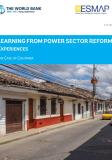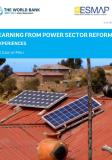Publications
In the Kyrgyz Republic, access to reliable and affordable heating is critical given the cold and long winters in its mountainous regions. With central heating solutions such as district heating limited to the capital city Bishkek and other urban areas, over 80 percent of households resort to individual heating solutions. Every second household uses a traditional coal-fired stove, dung is frequently used as primary heating fuel in regions where animal husbandry is prevalent, and other solid fuels from wood to rubber are burnt to meet heating needs. Alternatives to traditional solid-fuel based stoves are limited in the Kyrgyz Republic, especially for low income households: electricity supply is increasingly constrained during winter months as insufficient new generating capacity is being added to keep up with the growing needs of the population and government decrees cap winter consumption on a regional level. In this context, high efficiency, low emissions (HELE) heating stoves offer significant benefits for household comfort, public health and air pollution which is an increasing problem in urban areas in the winter.
The World Bank supported a comprehensive technical assistance (TA) program on HELE stoves over a three-year period 2016-19, examining demand features and supply characteristics of the Kyrgyz stoves market and piloting the use of HELE stoves in 76 low income households in four regions, with a focus on high altitude locations. The findings from the market studies and the lessons from the pilot trial are summarized in this report.
World Bank. 2020. Fueling Kyrgyzstan’s Transition to Clean Household Heating Solutions. World Bank, Washington, DC. © World Bank. License: CC BY 3.0 IGO.


